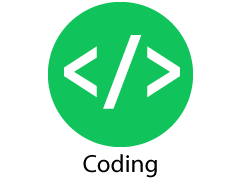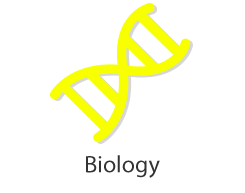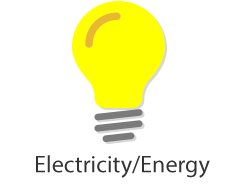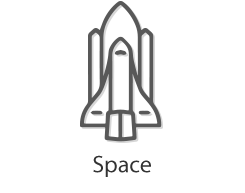USED ONE OF OUR LESSON PLANS?
Fill in our survey for a chance to win a Science North YETI mug! We will draw winners quarterly throughout the school year.
Fill in our survey for a chance to win a Science North YETI mug! We will draw winners quarterly throughout the school year.

Students will learn the principles of good experiment design, and then apply that knowledge to existing scientific or pseudoscientific works to evaluate their quality.

Students will look at essential components of a sustainable ecosystem and examine the impacts of climate change and various human activities on those important ecosystem components. Students will get the opportunity to rotate through different ecosystem monitoring stations and perform hands-on testing procedures to analyze collected samples of water and soil, neutralize acidic soil samples, and conduct biodiversity transect surveys to gather information about the environmental health of an area.

Through these lessons (approximately 3), students will explore the relationship between predators and prey. They will either use or create a program (using Python) to predict and assess how populations of predators and prey impact each other.
In this four-part lesson, students will learn all about health equity, starting by walking through the “seeing over the fence” analogy to understand how equity is different from equality. They will then develop further context for this issue by examining vaccine inequity as a case study. In part 3, one of Science North’s Indigenous Interns interviews a nurse at the Wikwemikong Health Centre on the challenges of achieving health equity in Indigenous communities. In the final section, the Many Nations, One Voice for Wellness team at Telus Spark will take students through a workshop on Dr. Christopher Emdin’s “Science Genius” method with health equity as the theme. Students will learn how to put their thoughts, feelings and experiences about this complex issue into rap and song.
* Internet connection required
In this two-part lesson, students will learn how scientific research is conducted and why scientific integrity is important in determining what sources of information we can trust. They will understand what can happen when a lack of scientific integrity leads to misconduct and explore scientific integrity with a real-world example of how we develop and test new vaccines. They will learn about the importance of understanding history and increasing diversity in science as they explore the contributions of scientists from different communities and backgrounds. Students will also learn the different parts of a research study and the signs of trustworthy research. Each learning objective is followed up by an online game or hands-on activity to reinforce the concepts.
* Internet connection required
In this lesson, students will understand the role the immune system plays. They will learn about the different types of pathogens, how they infect our bodies and the stages of infection. In the Agents of the Immune System GooseChase experience, students will work independently or as part of a team to complete the missions, learn about the immune system and collect points. Students' submissions in the GooseChase app will remain hidden from other students who participate in the Agents of the Immune System experience.

Students will work through an introduction the python while exploring various aspects of our solar system. Once familiar with the basic programming constructs and data types they will explore the role of the Sun in our solar system using a simulation programmed in python.
Lesson Plan Part 1 Part 2 Part 3 Part 4

In this lesson, students will use a Microbit and various sensors to create smart home features that can be used to reduce electrical consumption in their home.

In this lesson, students will use a Microbit to test water samples for three different factors; temperature, turbidity and salinity. Students will be able to use these three tests to determine the quality of water.

Students create their own digital animated star chart showing the motions of the stars in the night sky for any day of the year and time of day. Examples are given to complete the task with Scratch.

To learn about the Moon and the challenges and cost of exploring it, students play a rover that explores the surface to find a suitable location for a lunar base. They do this by giving commands to their rover and then analyzing and solving the incoming data and errors due to natural events (which happen randomly based on the roll of a dice). This lesson is set up so that students generate the “code” to guide a rover safely on the Moon as it’s conclusion.

In this post activity to the school program, Neuroscience, students will learn the difference between reaction and reflex neural pathways. They will simulate what happens in their body during a reaction and during a reflex to better understand why there is a difference between the two.

Your students will have a chance to explore the history of atomic models and build a Bohr-Rutherford atomic model using Scratch coding blocks. This will be an interactive way for the students to understand the structure and components of an atom using the Bohr-Rutherford atomic model and develop coding skills in the process.

Students get to explore first hand and experience similar challenges faced with space exploration using Ozobots. Students will be given a challenge to program their Ozobots to complete an exploration mission. Students will then have a chance to reflect, relate and research obstacles they faced in their mission to the challenges of space exploration.
In this lesson, students will plan, build and market an electronic gadget of their choosing. Students will be encouraged to get creative and invent a simple gadget that can perform a task. As part of the process, students will have to make a project proposal to first gain approval. Once they’ve done so, they will have to build their gadget using a battery, wires and multiples loads, requiring them to use a parallel circuit. Finally, Students will have to make a sales pitch to present their product. The planning and marketing of the electronic gadget will support FSL learners while the lesson in its entirety will support the grade 9 science curriculum.

This is lesson one of a series of three lessons on electromagnets. The students will be making their own electromagnets and then performing experiments with them in later lessons. This lesson is intended for the Applied level, but could be used at the Academic level as well.

This is lesson two of a series of three lessons on electromagnets. The students create a plan to test a dependent variable of their choosing. Students should have completed Exceptional Electromagnets Part 1, making an electromagnet. This lesson is intended for the Applied level, but could be used at the Academic level as well.

This is lesson three of a series of three lessons on electromagnets. The students will test a dependent variable of their choosing. Students should have completed Exceptional Electromagnets Part 1and 2. This lesson is intended for the Applied level, but could be used at the Academic level as well.

In this lesson students will learn about the history of the telegraph. They will create their own telegraph. Students will benefit greatly from a previous understanding of how an electromagnet works. This lesson is intended for the Applied level, but could be used at the Academic level as well.

This is lesson one in a series of four lessons where students will be creatively introduced to the problem of keeping astronauts alive on a distant planet or moon. In this lesson, students will make a list of what astronauts need to survive in space. This lesson is intended for the Applied level, but could be used at the Academic level as well.

This is lesson two in a series of four lessons where students will be creatively introduced to the problem of keeping astronauts alive on a distant planet or moon. In this lesson students will decide on a destination for their space station. This lesson is intended for the Applied level, but could be used at the Academic level as well.

This is lesson three in a series of four lessons where students will be creatively introduced to the problem of keeping astronauts alive on a distant planet or moon. In this lesson students will design a space station. This lesson is intended for the Applied level, but could be used at the Academic level as well.

This is lesson four in a series of four lessons where students will be creatively introduced to the problem of keeping astronauts alive on a distant planet or moon. In this lesson students will build their space station. This lesson is intended for the Applied level, but could be used at the Academic level as well.

Students will conduct an experiment to calculate how many helium balloons would be needed to send a person to the edge of space. An understanding of how to calculate the volume of a sphere (grade 9 math) will be useful. This lesson is intended for the Academic level.
Students will be amazed to see what appears to be a mind boggling magic trick. With an easily constructed ‘Science Rope Tube’, teachers will show students how all four ends of the rope tube seem (astonishingly) connected. Students will make observations and inferences, create models, and try to falsify and improve those models.
Introduce to students the idea that the scientific method isn’t just one single way of doing things.

In this activity, students create a landscape map and apply different development scenarios to see how the landscape of the ecosystem is affected.

In this activity, students create a food web to model bioaccumulation as it occurs in a variety of scenarios.

Students will learn about static electricity and charging by friction by formulating hypotheses and conducting a scientific experiment on whether an empty pop can is repelled or attracted to a charged balloon. Students will study the relationship between the time spent charging by friction and the electric force between two objects

Students will learn about static electricity and charging by induction and contact by building an electroscope, a device that can be used to detect the presence of an electric charge.